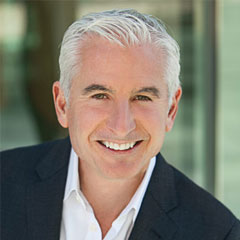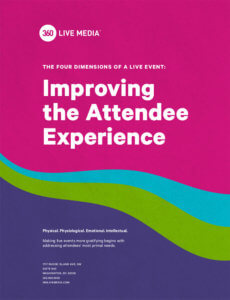
Don Neal
I’m sure you remember this pyramid model from Psych 101: five tiers of emotional needs that must be met in sequential order before an individual’s full potential can be achieved. More than 70 years ago, psychologist Abraham Maslow published this hierarchy, with physiological needs as the foundation, followed by safety, love and belonging, esteem, and finally, self-actualization.
How does this construct fit in with events? Well, if participants are distracted by the growl of their famished stomachs or preoccupied with trying to find a group they fit into, they won’t be able to focus on learning, much less on having a transformational experience. And why should we care about their self-actualization.
Because of one characteristic, in particular: peak experiences. According to Maslow, it’s only when all other needs are met that we can engage in a peak experience, which he defined as: “Feelings of limitless horizons opening up to the vision … the feeling of ecstasy and wonder and awe, the loss of placement in time and space with, finally, the conviction that something extremely important and valuable had happened, so that the subject was to some extent transformed and strengthened even in his daily life by such experiences.”

Download a complimentary guide to the 4 Ds.
Events are ripe environments for these peak experiences, and why I developed the 4 Ds — the Physical, Physiological, Emotional, and Intellectual dimensions of events. Just as in Maslow’s hierarchy, in the 4 Ds construct, each need must be met sequentially in order for the audience to be open, to feel safe, to have a sense of belonging, and to be inspired. Here are attributes of each:
- Physical — the geographic location, the venue, the staging, the chairs, the trade-show environment, ingress and egress, and all the other physical elements and logistics that comprise the physical footprint of an event.
- Physiological — proper exercise, movement, sleep, hydration, nutrition, and renewal to enable your audience to be receptive to connecting with other participants and to be tuned in to the program.
- Emotional — building an emotionally engaging environment through lighting, spaces, program pacing, and social-engagement opportunities.
- Intellectual — designing a program that inspires learning and mental stimulation through interactive experiences, and hands-on application of concepts to real work.
Trade shows, conferences, and annual meetings must evolve, but do so within the risk guidelines of the organizer who ultimately needs to ensure a predictable revenue model.
We use the 4 Ds as a guide every day to reimagine new live media activations that deliver on revenue — and attendee — expectations.
Think of any environment where you are almost guaranteed to have a meaningful experience: your favorite sports arena, that perfect shopping spot, a park where you feel relaxed and love to read, maybe a quiet library, a hiking trail, or that favorite room in your house. True learning, professional development, and the sparks of creativity come only when your physical environment is strong and welcoming, your body and mind are nourished, your emotional needs are met, and you feel welcomed and valued.
Don Neal is founder and CEO of marketing, strategy, and experience agency 360 Live Media.
